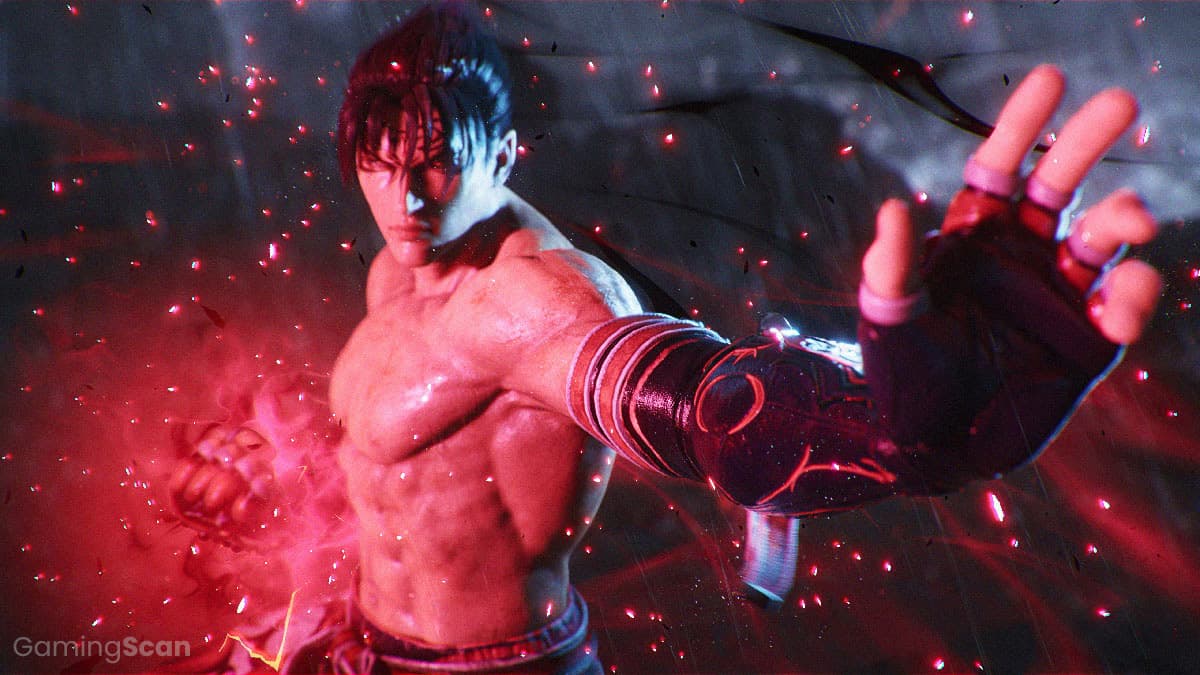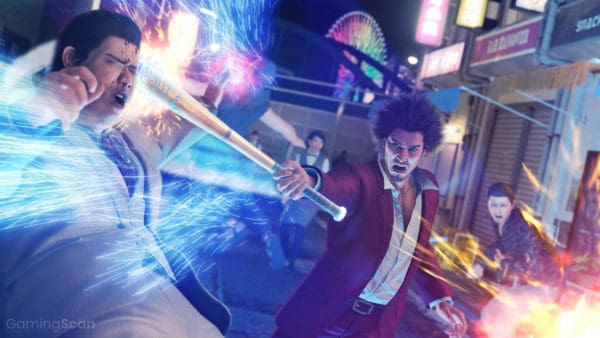Hitting arcades in the mid-1990s, Tekken has gone on to become one of the most recognizable fighting game franchises of all time.
As the series continues to evolve, so too does its roster of fighters and storyline centering on the Mishima family’s never-ending conflicts.
In this list, we’ll examine the series in detail by organizing all Tekken in games in order of release date with respect to the original arcade versions.
We encourage you to check back in the future for more information regarding Tekken 8, the next entry in the series due out in 2023.
Having said that, let’s see what this legendary franchise has had to offer its fans!
Table of ContentsShow
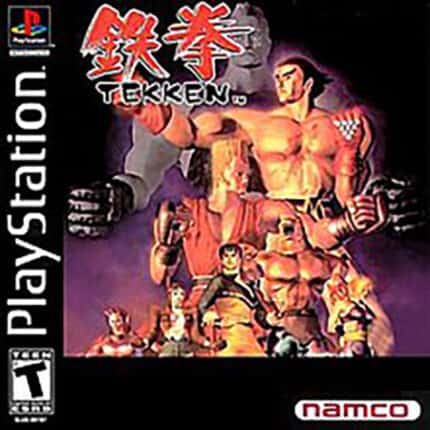
Tekken
Release Date: September 21, 1994
Platforms: Arcade, PS1
The original Tekken was developed and published by Namco in 1994 and introduced players to a roster of 8 fighters.
Unlike most fighters released at the time, Tekken let players control their character’s four limbs independently, giving combat a unique feel.
The game’s story sets the stage for the decades-long rivalry between Heihachi Mishima and his son Kazuya, who was callously thrown off a cliff by his father to test his worthiness as an heir.
Following its arcade and eventual console release a year later, Tekken received positive reviews and would go on to become one of the best-selling fighting games in Japan.

Tekken 2
Release Date: June 21, 1995
Platforms: Arcade, PS1
Sensing they had a hit on their hands, Namco released a follow-up to Tekken less than a year after its original release date.
At launch, Tekken 2 featured 10 playable characters in the arcade version, with more being added via updates and a subsequent console port for a total of 25 fighters.
The story is set 2 years after the King of the Iron Fist Tournament from Tekken 1 and sees a now-corrupt Kazuya Mishima leading his family’s criminal empire.
Much like its predecessor, Tekken 2 was a massive global success that would go on to become the highest-grossing arcade game at the time.
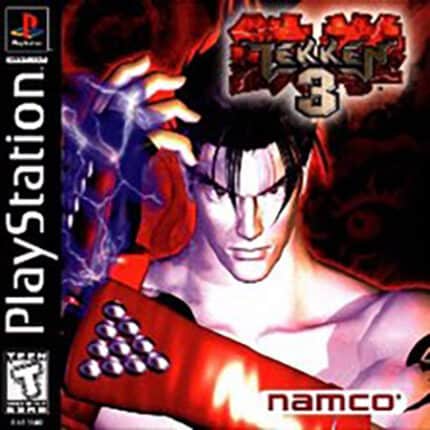
Tekken 3
Release Date: March 20, 1997
Platforms: Arcade, PS1
Nearly two years later, Tekken 3 made its grand debut in arcades before being ported to the PlayStation platform in 1998 with a total of 21 playable characters.
This entry is notable for introducing several fighters that have gone on to become staples of the series, including Jin, Ling, Bryan Fury, and Eddy Gordo among others.
Gameplay-wise, Tekken 3 places a greater emphasis on 3D movement with the ability to perform sidestep dodges during battles.
These innovations coupled with a huge 15-year time-jump in the series’ overarching storyline were critically well-received and led to Tekken 3’s universal acclaim.

Tekken Tag Tournament
Release Date: July 1, 1999
Platforms: Arcade, PS2
Maintaining the fighting mechanics of its predecessors, Tekken Tag Tournament sees players battling with teams of two characters.
During matches, fighters can be swapped out with their partner to recover lost health and provide a temporary boost in strength.
Conceived as a series compilation, Tag Tournament features over 35 characters from Tekken 1-3 with improved appearance and moveset designs.
Yet again, the game was a critical and commercial success that greatly benefited from a host of graphical improvements included with the PlayStation 2 version.

Tekken 4
Release Date: July 1, 2001
Platforms: Arcade, PS2
Tekken 4 would be the next officially numbered entry in the series and take on a much darker tone than earlier games.
This is most apparent in the game’s story, which sees Kazuya revived after his death 20 years prior to entering the King of Iron Fist Tournament 4 in hopes of reclaiming the Mishima Empire.
On the gameplay side of things, Tekken 5 carries several notable changes such as walled-off stages, the ability to move before the start of a round, and six new fighters for a total of 23.
While reviews weren’t as stellar as past outings, the game was generally well-received, particularly for its confined stages and solid combat.

Tekken 5
Release Date: November 2004
Platforms: Arcade, PS2
Marking the tenth anniversary of the franchise upon its release, Tekken 5 was a major shift for the series as a whole.
The story is set moments after Tekken 4’s ending and sees a mysterious figure (later revealed to be Jinpachi) taking control of the Mishima Zaibatsu after Heihachi’s supposed death.
Gameplay saw several changes from Tekken 4 as well, such as the removal of uneven stage terrain, faster combat/movement, and for the first time in the series, character customization.
These, combined with a total of 32 playable characters (26 returning, 6 new) were all warmly received by fans as well as most gaming outlets.
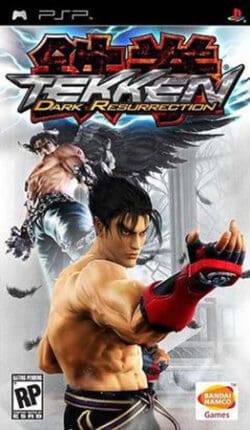
Tekken: Dark Resurrection
Release Date: December 2005
Platforms: Arcade, PSP, PS3
Billed as a standalone update to Tekken 5 released in arcades and later for the PlayStation Portable handheld, Dark Resurrection plays an interesting role in the franchise’s legacy.
It maintains the same story as Tekken 5, only with three new characters stepping into focus: Emilie de Rochefort, Sergei Dragunov, and Armor King II.
Several changes were also introduced to Tekken 5’s gameplay, with certain fighters gaining new moves, some moves being rebalanced, and character customization expanded.
Although the game was ultimately well received, many hardcore fans took issue with Dark Resurrection coming to PSP first before eventually making its way to PS3 as a downloadable title.
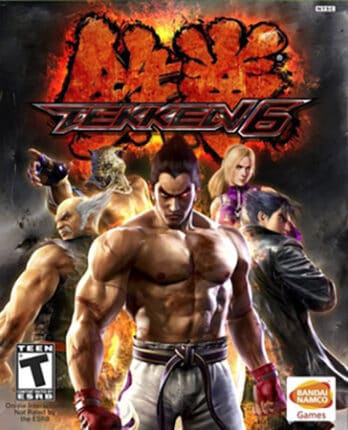
Tekken 6
Release Date: November 26, 2007
Platforms: Arcade, PSP, PS3, Xbox 360
To appease fans and no doubt maximize sales, Namco made sure to release Tekken 6 on home consoles prior to porting the game to PSP.
New to the game was the Rage system, in which the player’s character would grow stronger anytime their health was low, as well as bigger stages and expanded fighter customization.
Alongside these was a new beat ‘em up-inspired campaign mode centering on an amnesiac soldier named Lars Alexandersson and his journey to regain his memory.
Tekken 6 expanded its roster to include a total of 39 fighters (34 returning, 5 new) and was generally well-received across each version.

Tekken Tag Tournament 2
Release Date: September 14, 2011
Platforms: Arcade, PS3, Xbox 360, Wii U
Positioned as a sequel to the first Tag Tournament, Tekken Tag Tournament 2 features the largest playable roster of fighters to appear throughout the series to date.
Similar to the original, matches consist of two-character teams with the added option of selecting a solo fighter for an added challenge.
The setup for the story sees Heihachi developing a rejuvenation serum that boosts his appearance and power, leading him to host yet another King of Iron Fist Tournament.
Upon release, Tag Tournament 2 was met with positive reviews citing its polished combat and extensive cast of fighters.

Tekken 7
Release Date: March 18, 2015
Platforms: Windows, PS4, Xbox One
For Tekken 7, Namco (from here on out known as Bandai Namco) sought to introduce several new elements to shake up Tekken’s combat.
The main additions were Rage Arts and Power Crush, two beginner-friendly mechanics intended to draw in newcomers to the franchise.
Tekken 7’s plot is set shortly after Tekken 6 and focuses on the events leading up to Kazuya and Heihachi Mishima’s epic final battle.
Following its release, Tekken 7 was met with positive reviews and dubbed a commercial success, selling over 10 million copies as of December 2022.

Tekken 8
Release Date: TBA
Platforms: Windows, PS5, Xbox Series X/S
The latest entry in the series that’s yet to be released, Tekken 8 was formally announced in September 2022 during a PlayStation State of Play digital event.
The game’s reveal sets up a fight between protagonist Jin Kazama and his father Kazuya Mishima, a tense showdown that the series has been leading up to for years.
Considering the story is set six months after Tekken 7, fans have already begun making comparisons between this conflict and the final battle between Kazuya and Heihachi.
While Bandai Namco hasn’t issued a release date, we know Tekken 8 is due out sometime in 2023 for PC and current-gen consoles.
